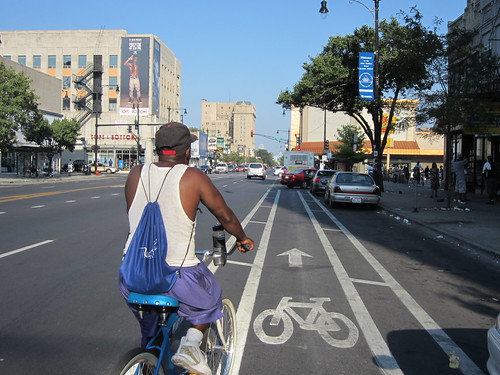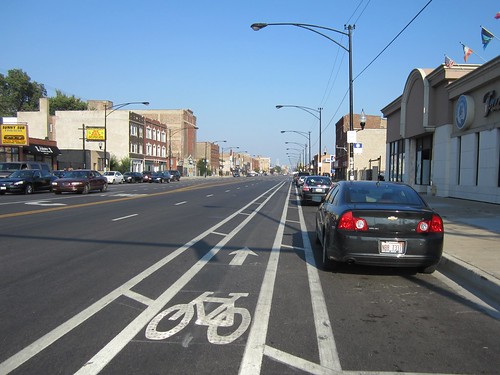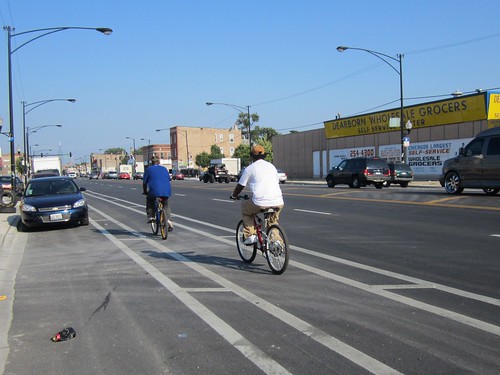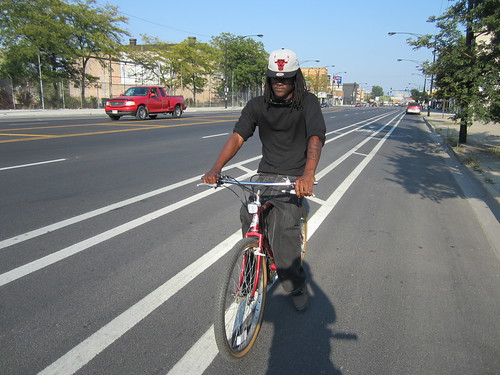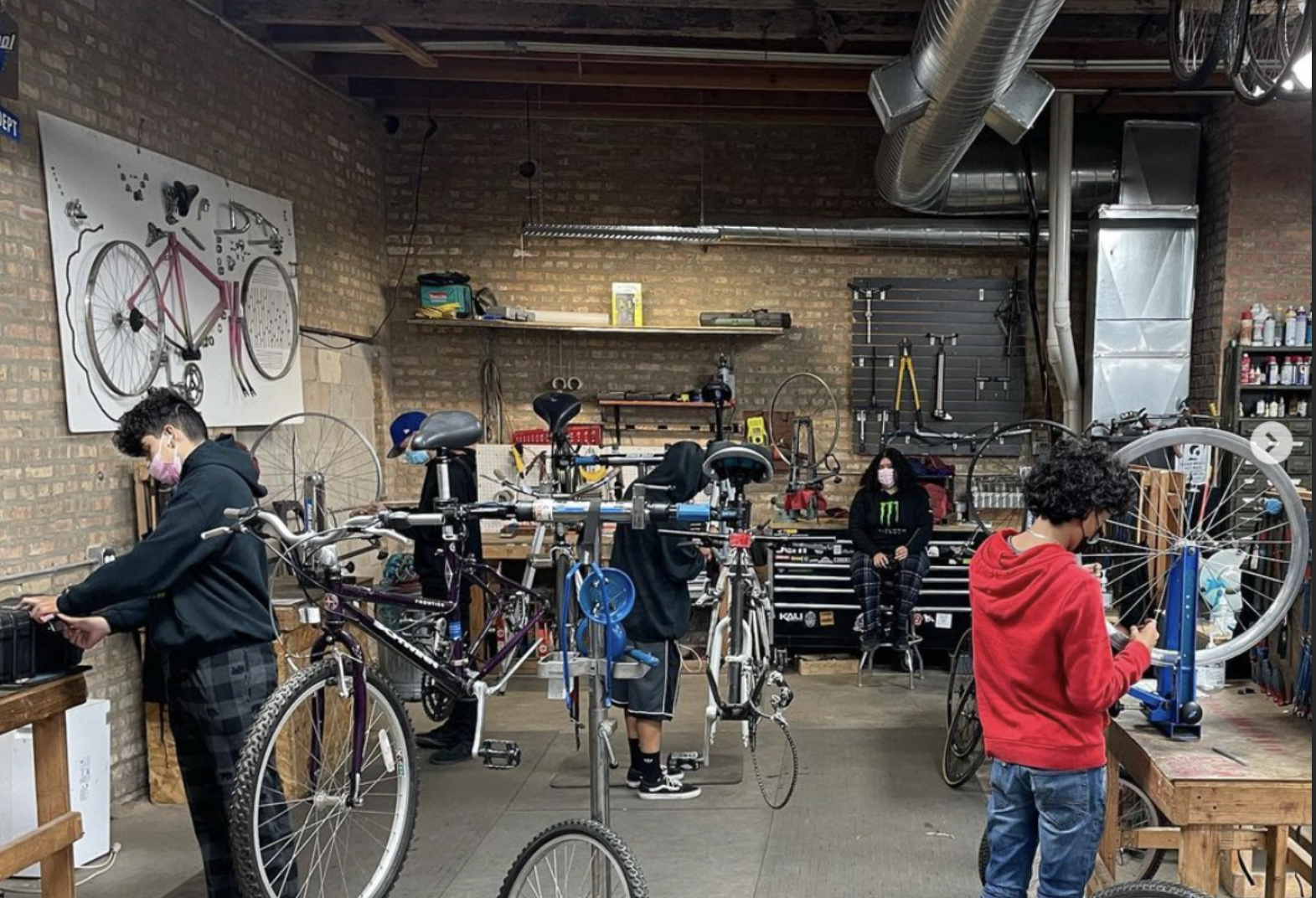Well-designed protected bike lanes are generally far superior to buffered lanes, because it provides actual physical protection from moving cars, not just paint on the road, which encourage more risk-averse people to ride. On the other hand, if protected lanes are off the table, well-executed buffered lanes are nothing to sneeze at.
The Chicago Department of Transportation recently striped buffered lanes on two miles of Madison Street between Pulaski Road and Central Avenue in Austin and Garfield Park. At around 80 feet wide, this four-lane road wide could accommodate four travel lanes, two parking lanes and two protected bike lanes, and it’s not a state-jurisdiction roadway. The Illinois Department of Transportation is currently prohibiting protected, but not buffered, lanes on state roads. Therefore, protected bike lanes were an option on Madison.
However, after the street was slated to be repaved as part of the city’s Arterial Streets Resurfacing Program, CDOT chose to build buffered lanes instead of protected ones. It’s likely the decision was informed by the fact that it’s harder to make a case for protected lanes in neighborhoods that aren’t already bike-friendly.
“Many of [the current bike lane] projects are in parts of the city where we don’t have a lot of bike infrastructure yet,” CDOT Project Manager Mike Amsden recently told me. “We’ve heard on a regular basis when we’re talking to stakeholders in these communities that, ‘You need to walk before you can run.’... Putting in a buffered lane is a great start. It can help get people out riding and start that mode shift.”
When I took a spin on the new lanes yesterday during the evening rush, I did see a dozen or two people on bikes. Almost all of them were male, some were riding in the bike lanes but pedaling against traffic, and many others still opted to ride on the broad sidewalks instead. That’s an understandable choice, since biking alongside four lanes of fast car traffic must seem unsafe to inexperienced cyclists.
I would never choose to ride on a four-lane street myself, but these well-designed buffered lanes make Madison a relatively pleasant street for those who are comfortable riding in traffic, and improve safety on the street for other road users as well. Travel lanes weren’t removed, but they were narrowed, which seems to calm traffic somewhat, and high-visibility zebra-stripe crosswalks were added to increase pedestrian safety. The bike lanes are marked through the intersections with skip dashes and sharrows, and the fresh asphalt is glassy smooth.
Nearby resident Ronell Wilson, 17, riding his BMX to a dollar store near Lavergne Avenue, agreed that the new lanes make Madison a nicer place to ride. “You’ve got your own space on the street, so that makes it more comfortable,” he said.
Mayne Spraggis, 19, who had been pedaling his mountain bike west in the eastbound lane, also said he liked the new lanes, except for their nearness to motorized traffic. “It’s the cars, that all,” he said. “Otherwise it’s all good. It’s nice that you can ride in the street now and you don’t have to worry about busting a tire on glass on the sidewalk.”
Since protected lanes could have fit on Madison, the new lanes do represent a bit of a missed opportunity. However, as far as buffered lanes on a four-lane street go, CDOT has created a respectable facility that’s a big improvement to the previous configuration. Hopefully the lanes will encourage more people in these communities to try biking for transportation in the future.
